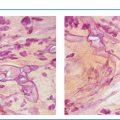Breast cancer is an incredibly complex disease, and when metastatic or terminal, it becomes even more complex. The difficulties clinicians encounter with this disease go far beyond the malignancy. It includes, in many cases, particularly young women, families, including children directly affected by the disease. The course and management in these complex situations start with therapy directed at the breast cancer, although this also includes symptom management, psychosocial issues, spiritual domains, and goals of care. Many of these are addressed by the palliative care team, although this may include other ancillary personnel such as alternative medicine practitioners, dietitians, and counselors.
Palliative Chemotherapy
The goal of palliative chemotherapy is often to improve overall survival. Median overall survival is now more than 3 years among metastatic breast cancer patients, and ranges from a few months to years. Palliative care is imperative in the management of metastatic breast cancer, including improved quality of life, alleviation of symptoms, and management of side effects to the treatment.
Treatment selection is based on clinical factors, tumor biology, and goals of care, and treatment may include systemic chemotherapy, endocrine therapy, biologic therapy, and supportive care measures. The most important predictors of treatment response are hormone receptor status and HER2/neu overexpression. Patients with genetic alterations in breast cancer susceptibility genes 1 or 2 (BRCA) are more likely to respond to poly(ADP ribose) polymerase (PARP) inhibitors. Regarding chemotherapy, consistent predictors of poor response are progression with prior chemotherapy for advanced disease, relapse within 12 months of adjuvant chemotherapy, poor performance status, and multiple disease sites including visceral disease.
Pathways create a standardized approach to the care of our patients. The National Comprehensive Cancer Network provides multiple options for the treatment of patients. Unlike the NCCN, other pathway systems provide a more standardized approach and allow medicine an enormous potential to harvest retrievable data and influence the future care of patients. ( Tables 14.1 to 14.5 ).
| Aromatase inhibitor + CDK4/6 inhibitor (abemaciclib, palbociclib, or ribociclib) |
| Everolimus plus endocrine therapy |
| Selective estrogen receptor downregulator (fulvestrant) plus a nonsteroidal aromatase inhibitor (letrozole, anastrazole) |
| Fulvestrant plus CDK4/6 inhibitor (abemaciclib, palbociclib, or ribociclib) |
| Aromatase inhibitor ± trastuzumab |
| Aromatase inhibitor ± lapatinib |
| Aromatase inhibitor ± lapatinib + trastuzumab |
| Fulvestrant ± trastuzumab |
| Tamoxifen ± trastuzumab |
| Anthracyclines (doxorubicin, liposomal doxorubicin) a |
| Taxanes (paclitaxel) a |
| Antimetabolites (capecitabine, gemcitabine) a |
| Microtubule inhibitors (vinorelbine, eribulin) a |
| Sacituzumab govitecan a |
| Other regimens (cyclophosphamide, docetaxel, albumin-bound paclitaxel, epirubicin, ixabepilone) a |
| First line | Pertuzumab + trastuzumab + docetaxel |
| Pertuzumab + trastuzumab + paclitaxel | |
| Second line | Fam-trastuzumab deruxtecan-nxki |
| Ado-trastuzumab emtansine (T-DM1) | |
| Third line | Tucatinib + trastuzumab + capecitabine |
| Trastuzumab + docetaxel or vinorelbine | |
| Trastuzumab + paclitaxel ± carboplatin | |
| Capecitabine + trastuzumab or lapatinib | |
| Trastuzumab + lapatinib (without cytotoxic therapy) | |
| Trastuzumab + other agents | |
| Neratinib + capecitabine | |
| Margetuximab-cmkb + chemotherapy (capecitabine, eribulin, gemcitabine, or vinorelbine) |
| Breast Cancer Subtype | Biomarker | Detection | US FDA-Approved Agents |
|---|---|---|---|
| Any |
| Germline sequencing |
|
| HR-positive/Her2-negative | PIK3CA- activating mutation | PCR (blood or tissue block if blood negative), molecular panel testing | Alpelisib + fulvestrant |
| TNBC | PD-L1 expression (Threshold for positivity combine score of ≥10) | IHC | Pembrolizumab + chemotherapy (albumin-bound paclitaxel, paclitaxel, or gemcitabine and carboplatin) |
| Any | NTRK fusion | FISH, NGS, PCR (tissue block) |
|
| Any | MSI-H/dMMR | IHC, PCR (tissue block) |
|
| Any | TMB-H (≥10 mut/mb) | NGS | Pembrolizumab |
Symptom Management
The most important component of palliative management is symptom management.
- •
Pain
Nonpharmacologic
The idea of mind and body healing has been around for decades. How these enter symptom management varies, typically by patient.
Rehabilitative physical modalities include ultrasound, therapeutic exercise, occupational therapy, hydrotherapy, therapy for specific disorders such as lymphedema, and heat and cold therapies.
Psychological therapies include psychoeducation interventions, cognitive behavioral therapy, relaxation therapy, guided imagery, other types of stress management, hypnotherapy, and other forms of psychotherapy.
Neurostimulation includes implanted neurostimulators, both transcutaneous and transcranial.
Additional complementary therapies include acupuncture, massage, physical/movement (e.g., yoga), music therapy, art therapy, and other ideas such as mind occupational therapy (cognitive exercises such as coloring books or games such as sudoku).
Pharmacologic
Nonopioid
Treatment of cancer-related pain typically incorporates a pyramid strategy. Pain control with nonopioid measures is encouraged prior to consideration of opioids.
Nonopioid medications include acetaminophen, nonsteroidal anti-inflammatory drugs, topical agents, antidepressants, anticonvulsants, oral local anesthetics, steroids, cannabinoids, alpha-2 agonists, and ketamine.
Interventional therapies include nerve blocks, spinal analgesics, and surgical neuroablation.
Opioid
Opioids remain an integral part of the management of pain in terminally ill cancer patients. The difficulties with opioids are the serious nature of the addiction issues surrounding these medications, and as a result, these medications are heavily regulated.
We continue to encourage the use of opioids in situations where nonopioid measures fail to gain adequate pain control.
- •
Nausea/vomiting
Although nausea and vomiting continue to be important to control clinically, many patients receive adequate coverage with standard premedication for their chemotherapy.
Antiemetic medications are classified based on drug type ( Table 14.6 ).
Table 14.6
Classification of Antiemetic Medications
Prokinetic agents
Metoclopramide
Antihistamines
Diphenhydramine
Hydroxyzine
Promethazine
Dopamine agonists
Haloperidol
Chlorpromazine
Prochlorperazine
Olanzapine
Serotonin 5HT3 receptor antagonists
Ondansetron
Granisetron
Neurokinin receptor antagonists
Aprepitant
Benzodiazepine
Diazepam
Lorazepam
Corticosteroids
Dexamethasone
Prednisone
Cannabinoids
Dronabinol
Other anticholinergics
Scopolamine
Hydrobromide
Each class of drug type functions better depending on the nausea that is induced. Prokinetic agents are primarily used for gastric stasis and gastrointestinal dysmotility from various causes. Antihistamines are useful for vestibular and gut receptor nausea and vomiting. They are relatively contraindicated for constipation because they may further slow the bowel. Dopaminergic agents are best used for medication- and metabolic-related nausea. Serotonin 5-HTZ receptor antagonists are used for postoperative and radiation- and chemotherapy-induced nausea. Neurokinin receptor antagonists are particularly helpful for delayed chemotherapy-induced nausea and vomiting. Benzodiazepines are useful for anticipatory or anxiety-provoked nausea. Corticosteroids are useful for hepatic capsular distension, anorexia, and increased intracranial pressure. Cannabinoids help with chemotherapy-induced nausea and vomiting. Other anticholinergics are used for motion- or movement-related nausea and vomiting.
Gabapentinoids (gabapentin and pregabalin) have been used successfully for neuropathic pain. A summary of the benefits of gabapentinoids was published in 2015. It showed improvement (50% reduction in pain intensity) for gabapentin when treating postherpetic neuralgia. The number needed to treat to harm a single patient was 25.6, demonstrating a wide therapeutic index, and gabapentin has been successfully used for cancer-related pain. It does appear that if pain does not respond to one gabapentinoid, it can respond to the alternative gabapentinoid.
Analgesic antidepressants have also been widely studied for varied types of chronic pain. Duloxetine is often used in conjunction with gabapentinoids and appears to be a more powerful pain medication as an alternative to opioids in cancer-related pain. It is common for duloxetine or a similar antidepressant to be used in combination with gabapentinoids for adequate cancer-related pain control.
Opioids
The use of opioid analgesics is important to sustain control of cancer-related pain. The goal of therapy is to improve quality of life while limiting opioid-related side effects. Guidelines exist to provide a rationale for drug selection, route of administration, dosing, and side effect management.
A position paper from the EFIC (European Pain Federation) Task Force illustrated opioid use for the management of pain ( Table 14.7 )
Table 14.7
Different Opioids for Effective Pain Management
Opioids for moderate intensity pain
Codeine
Dihydrocodeine
Tramadol
Opioids for moderate-to-severe intensity pain
Immediate release opioids as oral or injectable
Morphine
Oxycodone
Hydromorphone
Sustained release opioids as oral
Morphine
Oxycodone
Hydromorphone
Tapnetadol
Transdermal formulations
Fentanyl
Buprenorphine
Opioids for specialist use only
Rapid onset transmucosal fentanyl-based formulations
Methadone 
Stay updated, free articles. Join our Telegram channel

Full access? Get Clinical Tree








